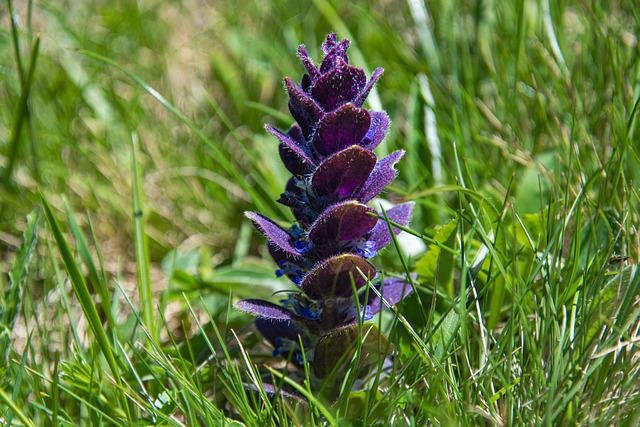
Bugola (scientific name Ajuga reptans), commonly known as St. Lawrence’s grass, is a perennial herbaceous plant spread throughout Europe up to Asia Minor. It tends to grow in fertile fallow meadows and along paths and hedges. For therapeutic purposes, the aerial parts of the bugle are mainly used, especially the leaves.
Bugola or Ajuga reptans: where does it come from
Let’s first discover the history and origins of this plant. Known since ancient times, it was particularly appreciated for its therapeutic properties during the Middle Ages.
In folk medicine, the bugle was mainly used to treat bleeding and fight liver poisoning.
Bugola is also known by the scientific name of Ajuga Genevensis, as well as Ajuga reptans.
There is also a different variety (called Ajuga Piramidalis or Bugola Alpina): as the name suggests, it differs from the common bugle variety in that its flower stems take on a pseudo-pyramidal and more compact shape. The small flowers are blue-pink, while the leaves take on a violet-purple hue. This last variety of bugola is found in the Alps, between 1000 and 2000 meters above sea level and tends to bloom in the summer.
Bugola properties and benefits
Bugola can be used for internal use through the preparation of an infusion based on its leaves in order to exploit its important healing properties, such as anti-inflammatory and astringent ones, especially useful in case of intestinal disorders.
The anti-inflammatory action of the bugle can also be exploited for infections affecting the oral cavity.
In the homeopathic and cosmetic field, moreover, it is useful for topical use in order to treat skin lesions, such as pressure sores, wounds, abrasions and cracks.
Finally, this plant can play an important effect in promoting digestive processes thanks to its active ingredients (such as tannins, saponins and bitter substances).
How to make bugle tea

To prepare a bugle-based infusion, you need to get 3 grams of dried leaves of the plant to infuse in 100 milliliters of boiling water and keep them for about 5 minutes.






